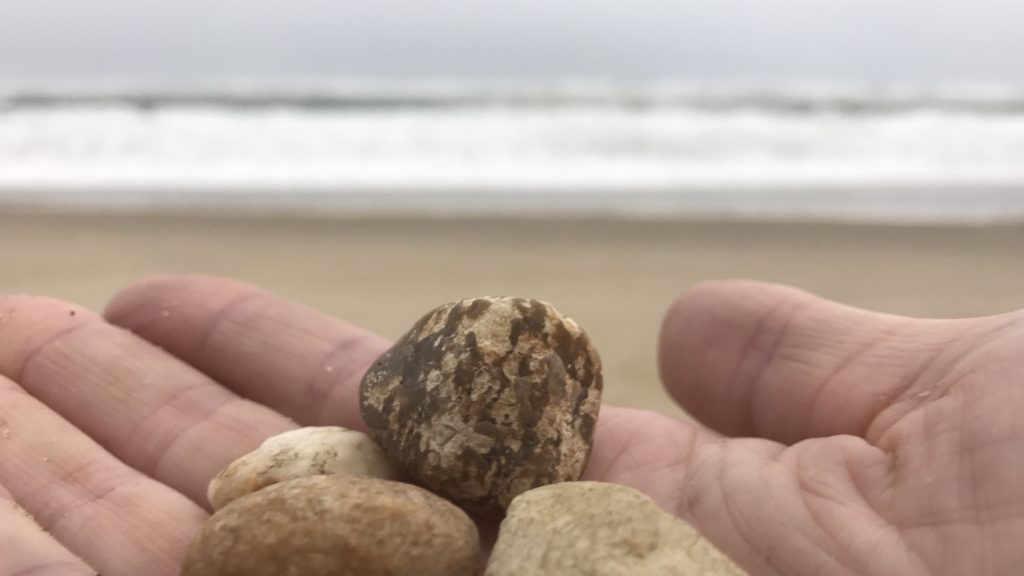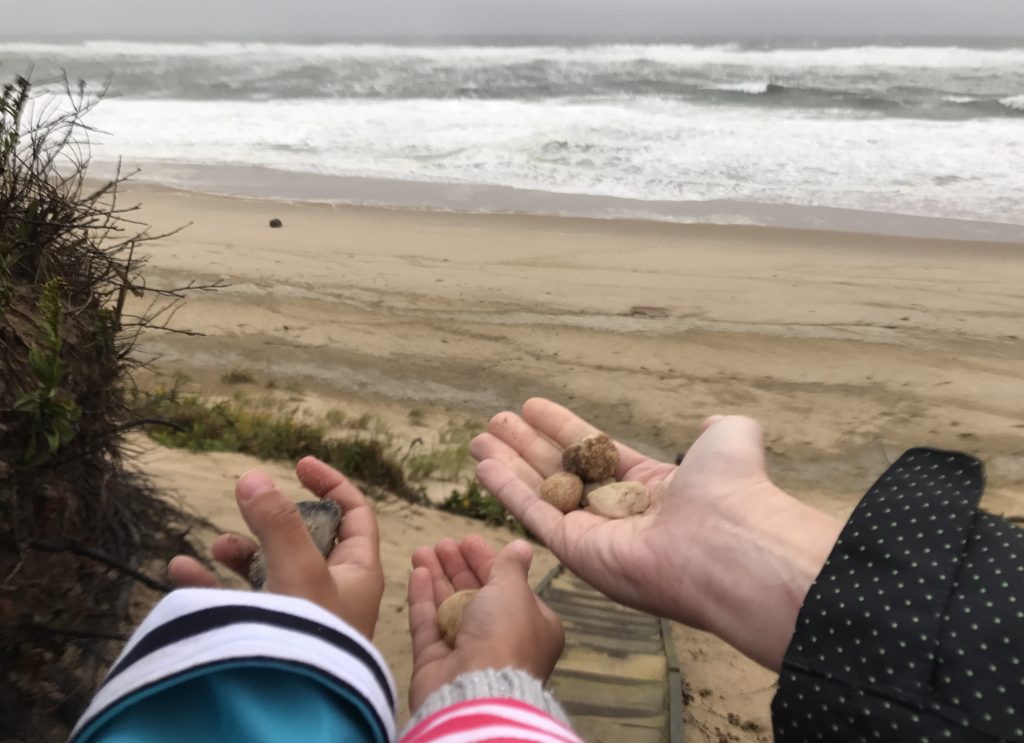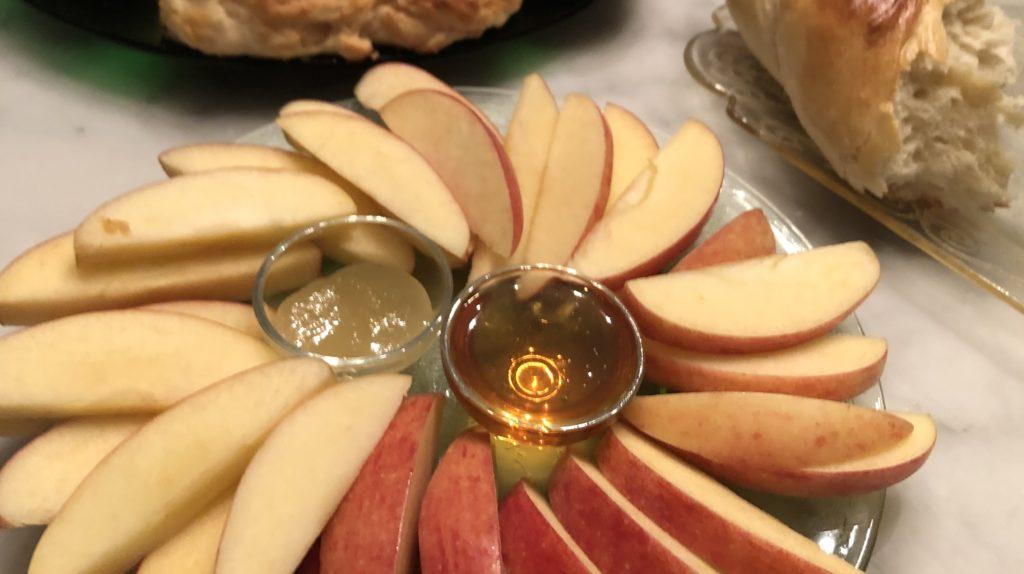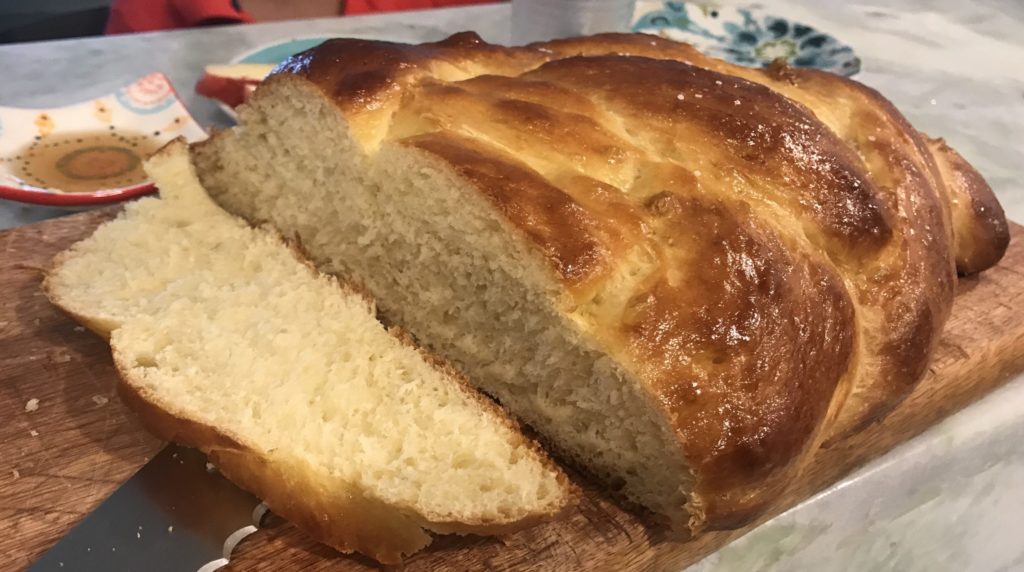This year on Rosh Hashanah, our Hindu-Catholic family found themselves inspired to savor some of the tastes and rituals of the Jewish New Year.
story
New Beginnings
Coming out of Ganesh Chaturthi in India and coming into a new school year, I had been thinking a lot about new beginnings, and had been looking for ways to help shape this September a new beginning for me.
While I had a vague understanding that Rosh Hashanah was the Jewish New Year, I wasn’t familiar with the rituals. A quick google landed me on this Rosh Hashanah page on chabad.org, where I was inspired to adopt a few of the rituals this year, and share them with my kids as well

We happened to be on the National Seashore in Wellfleet, taking advantage of the long weekend as an excuse to get away for my September birthday. It also happened to be when Hurricane Jose roared up the east coast, and that played into our observation of the traditions.
music
Shofar
To start things off we need to awake from our slumber!
The blowing of a shofar (ram’s horn) is intended to wake us up from our sleepwalking through life and prepare us for deep reflection.
story
Rosh Hashanah Rituals
Literally meaning “the head of the year,” Rosh Hashanah is thee Jewish new year. It is a time of reflection, which lead into the “10 days of repentance” and culminates in Yom Kippur: the day of atonement. In addition to self-reflection, it is a time to pray for blessings in the coming year.
Below are some of the traditions that spoke to us, in terms of reflection, reconciliation and hopes for a good year ahead.
Shofar
Blowing a shofar (ram’s horn) is intended to awake people from the sleepwalking through life. There wasn’t a shofar around but we could close our eyes and imagine. We also happened to get the same affect as Tropical Storm Jose howled and squealed through the windows.
While on the one hand I say this tongue-in-cheek, the rattle of the brand new storm windows, and high-pitched winds whistling into any gaps they found did keep me awake, mind racing to the point that it in some ways facilitated deep reflection in the way lonely, worrisome nights do.
Reflection
First, while still at home where we were warm and dry, the kids and I did a quick lesson on the tradition of Tashlikh, and talked about the importance of taking time to reflect on our actions, and also to take steps to better ourselves.
In the Catholic tradition (at least when I was growing up in New England), reconciliation isn’t formally introduced until 2nd grade, and I’ve yet to be introduced to a parallel Hindu ritual. Still, at 6 and 4 years old, they were able to understand well enough to participate in this Jewish ritual of requesting forgiveness with me.

Then we braved the winds and rain of hurricane-turned-tropical-storm Jose to have a walk to reflect and brainstorm some of the things each of us would do well to cast off.. As we were walking, we also found a few stones that would represent our sins in the ritual.
Impatience was on the top of my list, which won’t be a surprise to anyone who knows me. I enjoyed sharing this reflection with the kids because it was a reminder to all of us that we all make missteps and have room for improvement, all the years of our life.
Tashlikh
Tashlikh or Tashlich (meaning “to cast away”), is the ritual of throwing crumbs or stones out of one’s pockets and into a body of water, a symbol of cleansing ourselves of our sins and transgressions of the last year, and readying ourselves to forge a new, corrected course in the coming year.

Symbolizing the casting off of the sins we had recalled for ourselves, we tossed the representative stones into the the roaring Atlantic ocean at the Cape Cod National Seashore,. The rough waters due to tropical storm Jose made it feel even more symbolic.
Wishes for a Sweet Year Ahead
And we made fresh challah and dipped slices of apple in honey as a way to wish for sweetness in the coming year.

We didn’t make too much of a ceremony of dipping our challah and apples in honey, but as chabad.org suggests, we could have said:
“Ye-hi ratzon she-ti-cha-desh alei-nu shanah tovah u-m’tu-kah.
“May it be Your will to renew for us a good and sweet year.”
recipe
Fresh Braided Challah

For the challah used Joan Nathan’s ‘My Favorite Challah’ recipe which we followed almost exactly except:
- The Yeast: only instant yeast was available at the market, but we added it in the same method (not the quick way that the package suggests)
- The braiding: (the instructions weren’t getting us the braid we thought we wanted so we just went freestyle. Not perfect but fun.
- I should have made it round to signify a crown (apparently), but alas I read that afterwards.

story
Rosh Hashanah for All
As the challah dough rose and the kids napped, I caught up on some news and came across this timely opinion piece by Bari Weiss in the New York Times noting that we needn’t be Jewish to celebrate Rosh Hashanah, and I couldn’t agree more!
I think we’d all do well to learn more about each other’s traditions, and in so doing learn more about each other. So often our rituals look so different from the outside, but when we dig to the meanings and values from which they grew, we find commonalities.
OK. Time to get off my soap box…